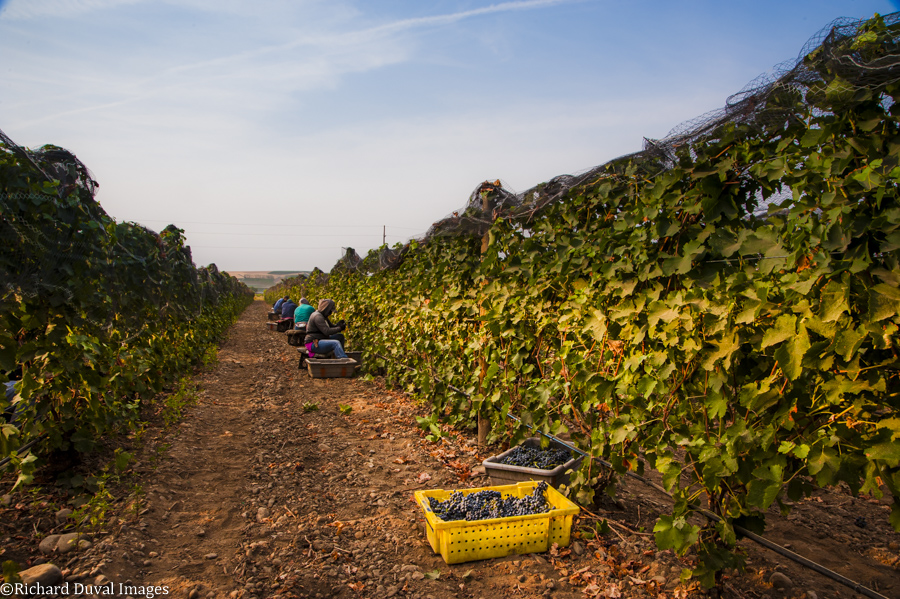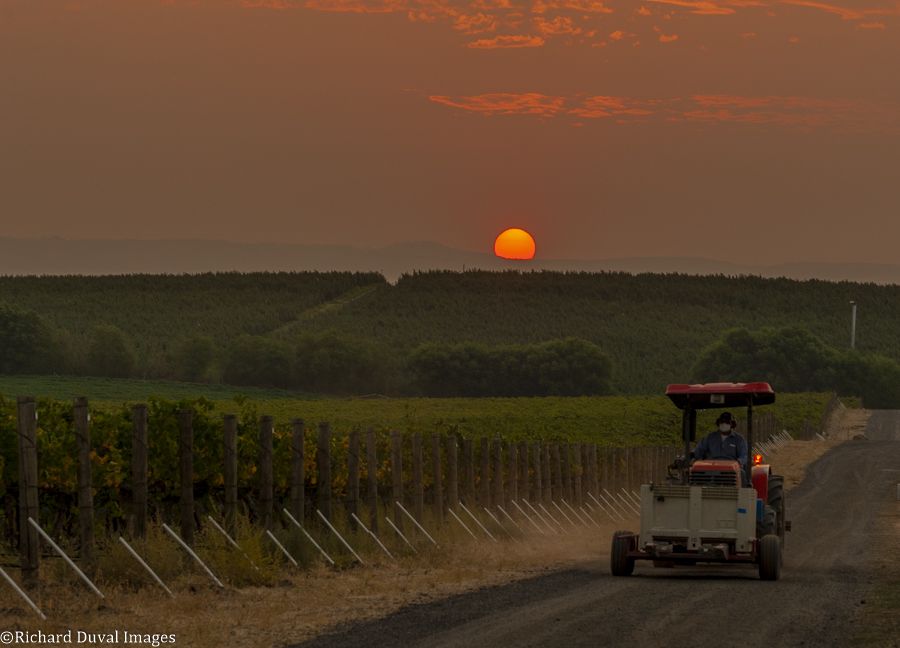What have been some of the challenges in the wine world and how do you think this program will help address some of those challenges?
On April 6, 2022, Forbes published an in-depth article about Breaking Ground, highlighting the program, how it began, and what we hope it will become. You can read the article here, which was written by Jillian Dara, but because you can only fit so few people in one article (that article featured two of our ambassadors), we wanted to share how our other farmer ambassadors responded to the questions Jillian asked our farmers. Below, you’ll find the questions Jillian asked, and you’ll get to hear from the farmers who responded to those questions. You’ll also see them in both English and Spanish. We hope you’ll enjoy getting to see some of the making of Breaking Ground, and that afterward, you’ll join us in raising a glass to those who grow our grapes.

What have been some of the challenges in the wine world and how do you think this program will help address some of those challenges?
Miriah Falce: One of the biggest challenges in any male-dominated field is underrepresentation. This past year I was a part of the launch of our new state group, the Alliance of Women in Washington Wine, whose goal is to inspire, connect, and advance those in the industry to make Washington a leader in equality in diversity. Along with my own personal experience and work in the group, challenges pertaining to motherhood in the wine industry, healthcare, immigration, livable wages, and more have reared their heads. Consumers who don’t live in a wine country might not understand some of the labor problems or the specific year-round work involved in making wine, and programs like this help showcase specific individuals that are involved. Showing the faces, showing the soul, is the best way to help bring about change as we progress forward.
One of the biggest challenges in any male-dominated field is underrepresentation.—Miriah Falce
Jaime González: Trying to excel in my work and in this medium to improve my work. I think this program will help with that.
Bernadette Gagnier: Equal representation of the work that is being done is a challenge in the wine world. This program is really tackling it head on and showcasing the farmers who do the dirty work to bring a luxurious product to market. Consumers don’t see the whole process, and this brings consumers into our lives, our experiences, and our passions.
Brittany Komm: One of the biggest challenges has been the disconnect between the farmers and their role in creating the wine. This new program is going to help close that gap and give consumers a look into how their wine starts in a way most have never seen before. I think overall there is a general disrespect for the farm/labor crews as well. People generally have no idea how hard and labor-intensive growing wine grapes truly is. These stories will bring to light all the conditions in which these farmers are subjected to working in. When certain tasks are being carried out in the vineyard. The toll it can take on one’s physical and mental health. This list could go on.
Sadie Drury: I think a lot of young people see wine as their parents’ and even grandparents’ drink and they’re not finding the excitement in wine that I know exists. Breaking Ground is going to connect younger consumers both with the land and the people who work in the vines and therefore the wines. Growing grapes in Washington is sustainable by nature. Vineyards are naturally a diverse place for plant species and insect life. The wine industry wouldn’t exist without a diverse group of people who farm the grapes. Vineyards all have their own unique terroir and unique way they are farmed which is part of the story behind every interesting bottle. Wine is inherently farm-to-table because of its traceability other beverages lack. This program is a way to show wine consumers all of this through the eyes of the people who do the work, which I think will resonate especially well with young people haven’t yet discovered why wine is so exciting.
I think a lot of young people see wine as their parents’ and even grandparents’ drink and they’re not finding the excitement in wine that I know exists. Breaking Ground is going to connect younger consumers both with the land and the people who work in the vines and therefore the wines.—Sadie Drury
Translated by Laura Angulo
¿Cuáles han sido algunos de los desafíos en el mundo del vino y cómo cree que este programa ayudará a abordar algunos de esos desafíos?
Miriah Falce: Uno de los mayores desafíos en cualquier campo dominado por hombres es la representación insuficiente. El año pasado formé parte del lanzamiento de nuestro nuevo grupo estatal, Alianza de Mujeres del Vino de Washington, cuyo objetivo es inspirar, conectar y avanzar a aquellos en la industria para hacer de Washington un líder en igualdad en la diversidad. Junto con mi propia experiencia personal y trabajo en el grupo, los desafíos relacionados con la maternidad en la industria del vino, la atención médica, la inmigración, los salarios dignos y más han surgido. Los consumidores que no viven en un país vinícola puede que no comprendan algunos de los problemas laborales o el trabajo específico durante todo el año que implica la elaboración del vino, y programas como este ayudan a exhibir a las personas específicas que están involucradas. Mostrar los rostros, mostrar el alma, es la mejor manera de ayudar a generar cambios a medida que avanzamos.
Uno de los mayores desafíos en cualquier campo dominado por hombres es la representación insuficiente.—Miriah Falce
Jaime González: Tratar de sobre salir en mi trabajo y en esta manera mejorar mi trabajo. Pienso que este programa ayudará con eso.
Bernadette Gagnier: Como ya mencioné, creo que la representación equitativa del trabajo que se está haciendo es un desafío en el mundo del vino. Este programa realmente lo aborda de frente y muestra a los agricultores que hacen el trabajo sucio para llevar un producto de lujo al mercado. Los consumidores no ven todo el proceso, y esto trae consumidores a nuestras vidas, nuestras experiencias y nuestras pasiones.
Brittany Komm: Uno de los mayores desafíos ha sido la desconexión entre los agricultores y su papel en la creación del vino. Este nuevo programa ayudará a cerrar esa brecha y brindará a los consumidores una idea de cómo comienza su vino de una manera que la mayoría nunca antes había visto. Creo que, en general, también hay una falta de respeto general hacia las cuadrillas agrícolas/laborales. La gente generalmente no tiene idea de lo difícil y laborioso que es realmente cultivar uvas para vino. Estas historias sacarán a la luz todas las condiciones en las que trabajan estos agricultores. Cuando se están realizando determinadas labores en la viña. El costo que puede tener en la salud física y mental. Esta lista podría continuar.
Sadie Drury: Creo que muchos jóvenes ven el vino como la bebida de sus padres e incluso de sus abuelos y no encuentran en el vino la emoción que sé que existe. “Breaking Ground” va a conectar a los consumidores más jóvenes tanto con la tierra como con las personas que trabajan en las viñas y por ende los vinos. El cultivo de uvas en Washington es sostenible por naturaleza. Los viñedos son naturalmente un lugar diverso para especies de plantas e insectos. La industria del vino no existiría sin un grupo diverso de personas que cultivan las uvas. Todos los viñedos tienen su propio terruño único y una forma única en que se cultivan, la historia interesante detrás de cada botella. El vino es inherentemente de la granja a la mesa debido a su trazabilidad de la que carecen otras bebidas. Este programa es una forma de mostrar a los consumidores de vino todo esto a través de los ojos de las personas que hacen el trabajo, lo que creo que resonará especialmente bien entre los jóvenes que aún no han descubierto por qué el vino es tan emocionante.
Creo que muchos jóvenes ven el vino como la bebida de sus padres e incluso de sus abuelos y no encuentran en el vino la emoción que sé que existe. “Breaking Ground” va a conectar a los consumidores más jóvenes tanto con la tierra como con las personas que trabajan en las viñas y por ende los vinos.—Sadie Drury

